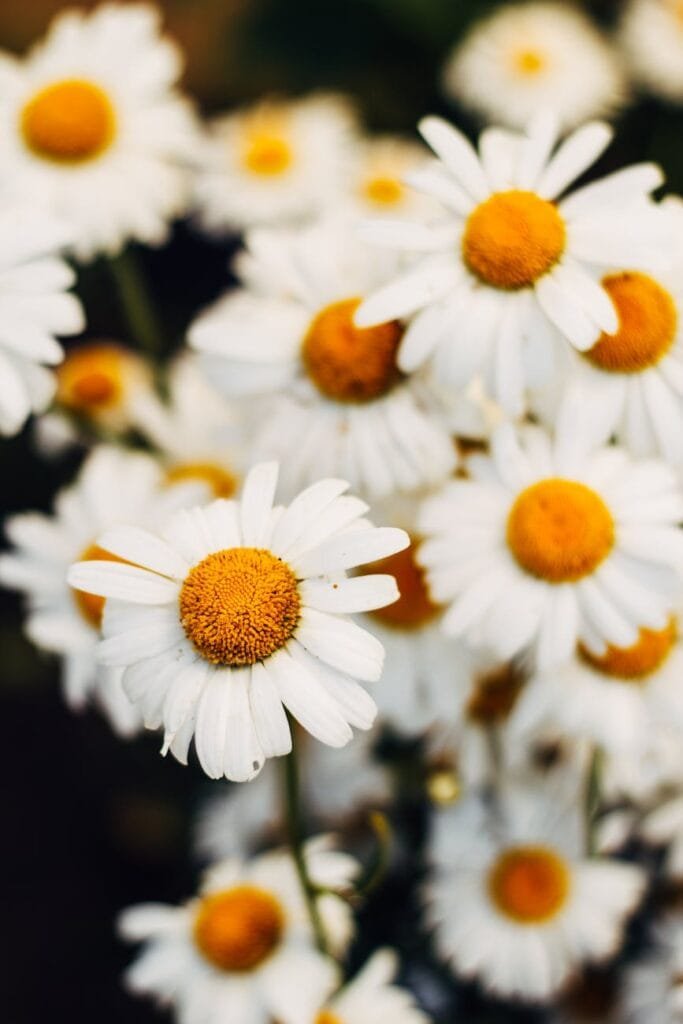Chamomile: The Calming Herb for Holistic Health
Table of Contents
Chamomile, a gentle herb with a long history of use, offers a wide array of potential health benefits. From promoting relaxation to aiding digestion and supporting skin health, this “plant doctor” has earned its place in traditional and modern medicine. This comprehensive guide explores the uses, benefits, and precautions associated with chamomile, backed by scientific evidence.
What is Chamomile?
Chamomile (Matricaria chamomilla or German chamomile), also known as Baboona, Sonbhal, or Babunphul, is a daisy-like herb belonging to the Asteraceae family. The word “chamomile” derives from the Greek words “chamai” (on the ground) and “mēlon” (apple), referring to its apple-like scent. It’s often called a “Plant Doctor” because it can benefit neighboring plants, particularly those that appear weak or unhealthy.

Chamomile has a rich history, with its use dating back to ancient times. Dioscorides, a Greek physician in Roman Emperor Nero’s army, prescribed chamomile for gastrointestinal issues, nervous conditions, and liver disorders.
Active Principles in Chamomile
Chamomile’s therapeutic properties stem from its diverse range of active compounds, including:
- Terpenoids: Alpha-bisabolol and its oxides.
- Azulenes: Including chamazulene.
- Flavonoids: Apigenin, quercetin, patuletin, luteolin, and their glucosides.
- Coumarins.
- Minerals: Sodium, potassium, calcium, magnesium, and others.
Traditional and Time-Tested Uses of Chamomile
Systemic Uses
- Anti-inflammatory: Reduces inflammation throughout the body.
- Antiseptic: Helps prevent infection.
- Analgesic: Relieves pain.
- Anxiolytic: Reduces anxiety.
- Sedative: Promotes relaxation and sleep.
- Antispasmodic: Relieves muscle spasms.
- Anti-allergic: Helps manage allergic reactions.
- Gastrointestinal (GIT) Issues: Indigestion, abdominal pain, ulcerative colitis, irritable bowel syndrome (IBS), anorexia, constipation, oral ulcers.
- Menstrual Issues: Dysmenorrhea (painful periods), oligomenorrhea (infrequent periods).
- Kidney and Gallbladder: Renal stones, gallbladder stones.
- Fever: Fever and pyrexia of unknown origin.
- Sleep and Stress: Insomnia, headaches, anxiety, stress.
- Respiratory Issues: Asthma, allergic rhinitis, and other allergic conditions.
Topical Uses
- Antiseptic: Wound healing and infection prevention.
- Anti-inflammatory: Wound healing, eczema, diaper rashes.
- Analgesic: Sprains, backaches, body aches, bruises, joint pains.
- Sitz Baths: Treating hemorrhoids and anal fissures.
Dosage and Method of Use
Systemic Use (Chamomile Tea):
- Infusion: 3-5 grams of dried flower heads, infused in hot water, two to three times daily (commonly known as chamomile tea).
- Capsules: Available in capsule form.
- Combinations: Often combined with other herbs to enhance specific effects.
Chamomile Tea Recipes
- Peppermint Chamomile Tea:
- Combine 1 tablespoon of chamomile flowers and 1 tablespoon of peppermint leaves.
- Bring 2 cups of cold, fresh water to a boil and remove from heat.
- Add the chamomile and peppermint to the pot and cover tightly.
- Steep for at least 5 minutes.
- Strain and drink.
- Simple Chamomile Tea:
- Infuse 1 heaped teaspoon of dried flower heads in hot water.
- Add lemon and a pinch of black pepper or cinnamon (optional).
- Sweeten with honey (optional).
Topical Use:
- Lotions and Ointments: Use water or oil extracts for anti-inflammatory and antiseptic effects.
- Hot Fomentation/Poultice: Apply hot compresses or poultices for pain relief.
- Sitz Bath: For hemorrhoids and anal fissures, boil 60 grams of chamomile flower heads in 1.5 liters of water for a few minutes. Cool to a tolerable temperature and use for a sitz bath.
Evidence-Based Uses of Chamomile
Scientific research supports many of chamomile’s traditional uses:
Effects on CNS
Studies indicate that chamomile extract can have a moderate effect in treating Generalized Anxiety Disorder (GAD). Luteolin, a flavonoid in chamomile, has been shown to reduce pro-inflammatory cytokines in brain cells, both in vitro and in vivo.
Skin Diseases
Chamomile oil has demonstrated effectiveness in wound healing in numerous animal and cell studies, including burn wounds. It has been found to promote faster healing than corticosteroids in some cases. Bisabolol, a component of chamomile, acts as an effective anti-pruritic (anti-itching) agent.
Diarrheal Diseases
Chamomile has been shown to significantly reduce the duration of acute diarrheal disease in children aged 6 months to 5.5 years, compared to a placebo.
Anti-oxidant Properties
Both alcohol and aqueous extracts (infusions) of chamomile exhibit strong antioxidant activity.
Anti-Microbial Properties
Preliminary data suggest that alcohol and chloroform extracts of chamomile (but not aqueous extracts) have antimicrobial activity against various organisms, including Shigella dysenteriae, Escherichia coli, Listeria monocytogenes, and Bacillus cereus. It may also help boost immunity.
Anti-Cancer Properties
Chamomile may offer benefits in cancer management in two ways: It has been shown to selectively inhibit cancerous cell growth with minimal impact on normal human cells. Apigenin 7-O-glucoside is considered the active anti-cancer component. Additionally, chamomile has demonstrated the ability to inhibit the mutagenic effects of certain substances in mouse bone marrow cells, suggesting a potential role in cancer prevention.
Diabetes Management
Studies in mice have shown a significant hypoglycemic effect with chamomile consumption. It may also help prevent complications of diabetes, such as retinopathy, neuropathy, and nephropathy, by inhibiting ALR2 enzymes and sorbitol.
Dental Health
Chamomile extract irrigation has been found effective in removing the dental smear layer, thus contributing to dental health.
Precautions and Interactions
While generally considered safe in recommended amounts, chamomile can have potential side effects and interactions:
- High Doses: Large quantities may cause gastrointestinal upset, such as nausea and vomiting.
- Allergies: Individuals allergic to asters, daisies, chrysanthemums, or ragweed may also be allergic to chamomile.
- Pregnancy and Lactation: Chamomile should not be taken during pregnancy and lactation.
- Medication Interactions: Chamomile can interact with certain medications. It’s crucial to inform your physician about any alternative medicines you use regularly.
- Cytochrome P450 Inhibition: Chamomile significantly inhibits Cytochrome P450 enzymes, potentially affecting the metabolism of drugs processed by the liver.
- Potentiation of Effects: It may potentiate the effects of sedatives, antidepressants, antihypertensives, and anti-diabetics.
- Anticoagulants: Due to its coumarin content, chamomile may increase the risk of bleeding in individuals taking anticoagulants (e.g., warfarin, heparin).
Conclusion
Chamomile is a versatile herb with a rich history and a growing body of scientific evidence supporting its various health benefits. From promoting relaxation and sleep to aiding digestion and supporting skin health, chamomile offers a natural approach to well-being. However, it’s essential to be aware of potential precautions and interactions, especially if you have allergies or take medications. For personalized guidance on incorporating chamomile into your health regimen, consider a consultation with a qualified healthcare professional.


